Books: Miyazakiworld
December 24, 2018 · 0 comments
By Andrew Osmond.
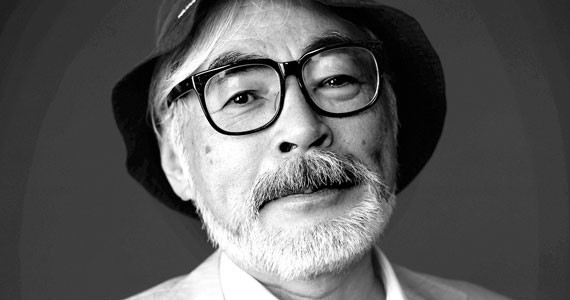 In the recent book Interpreting Anime, Christopher Bolton quoted a barbed comment by director Isao Takahata about his Ghibli colleague. “With Miyazaki, you have to totally believe in the world of the film,” Takahata said. “He is demanding that the audience enter the world he has created completely. The audience is being asked to surrender.”
In the recent book Interpreting Anime, Christopher Bolton quoted a barbed comment by director Isao Takahata about his Ghibli colleague. “With Miyazaki, you have to totally believe in the world of the film,” Takahata said. “He is demanding that the audience enter the world he has created completely. The audience is being asked to surrender.”
Bolton built on that comment, arguing that the immersive qualities of Miyazaki’s works reject the approach of much literature and also of “politically productive” anime directors such as Oshii, Otomo and Kon. What Miyazaki does not do, Bolton argues, is “move us in and out of the story in a way that makes us critically consider how language, fiction and media shape our experience of the world.” Whereas other directors may risk cynicism, relativism or confusion, Bolton fears Miyazaki’s films run “the risk of certainty, the loss of critical distance.”
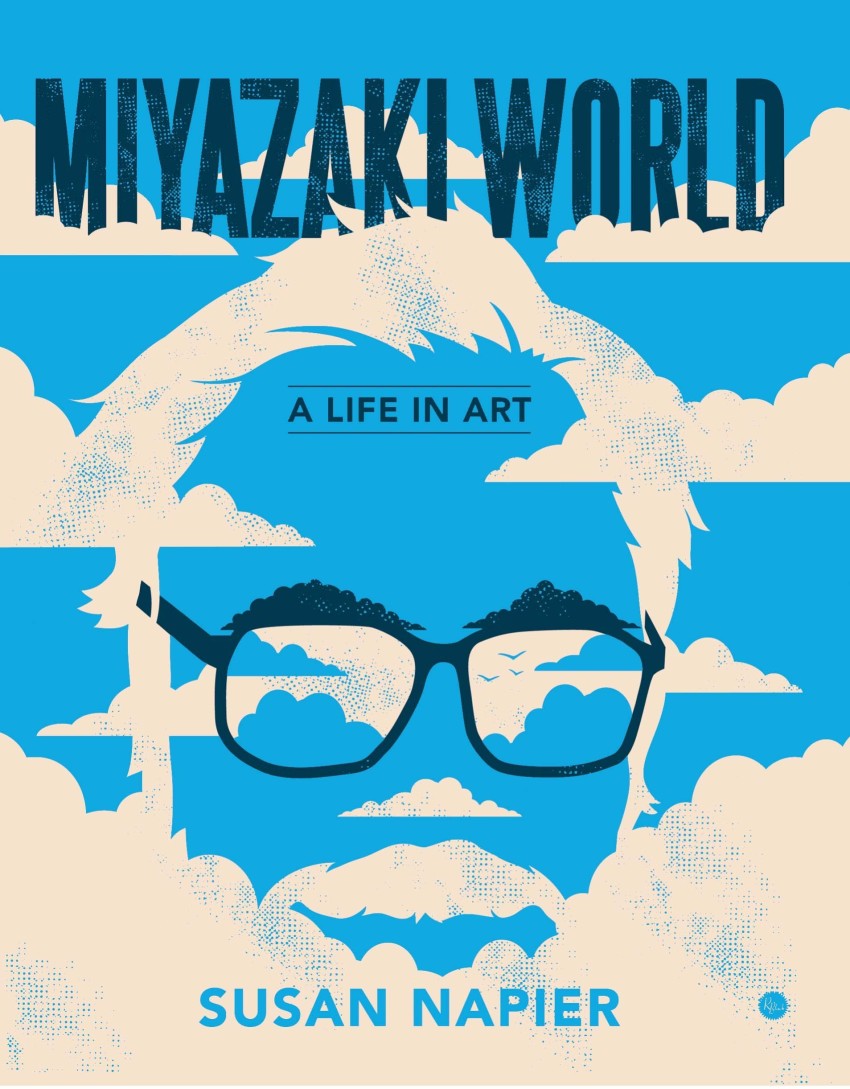 Author Susan Napier takes a more celebratory tone in her new book Miyazakiworld: A Life in Art. For her, “Miyazakiworld” is a synergy, combining “apocalypse, empowered female protagonists, believable children and elegiac or utopian visions”. These elements are interwoven “using such animation hallmarks as metamorphosis and surreal or dreamlike imagery,” with which “Miyazaki creates imagined empires… realms we can walk into, inhabit and mourn when we have to leave.”
Author Susan Napier takes a more celebratory tone in her new book Miyazakiworld: A Life in Art. For her, “Miyazakiworld” is a synergy, combining “apocalypse, empowered female protagonists, believable children and elegiac or utopian visions”. These elements are interwoven “using such animation hallmarks as metamorphosis and surreal or dreamlike imagery,” with which “Miyazaki creates imagined empires… realms we can walk into, inhabit and mourn when we have to leave.”
Takahata and Bolton’s argument, that the very seductiveness of these immersive realms discourages critical thought by the viewer, isn’t discussed by Napier directly. To some degree, her book supports that case. Napier stresses, for example, Miyazaki’s strong ethos and worldview, which he often pushes without qualification or reflection. In the early 1980s, for instance, Miyazaki flared up at the suggestion that his child characters were goody-goody in the age of Akira. “So you want to see ‘bad characters’, you fool?” he retorted.
At the same time, Napier also shows how Miyazaki’s films critique not just each other but also contemporary Japan and world affairs. For example, she argues that not only Spirited Away but also Totoro were reactions against the excesses of Japan’s “bubble” economy of the 1980s. Meanwhile Nausicaä with its “Toxic Jungle” echoes Japan’s eco-scandals such as the poisoning of Minamata Bay. Such real-world resonances counter Bolton’s claim that “When Miyazaki’s films point outside themselves it is only to his other films.”
Of Napier’s sixteen chapters in Miyazakiworld, eleven go through the films he’s directed to date, from Cagliostro to The Wind Rises. An extra chapter in the middle discusses the epic manga of Nausicaa – which is a key case of Miyazaki’s work critiquing itself, as the manga undoes many of the conclusions and reassurances of the better-known film version.
Napier summarises Miyazaki’s films at great and, frankly, excessive length. Many of Napier’s paragraphs, and some pages, are very skimmable if you know the films well, and there are a surprising number of mistakes in detail. For example, Napier says Rastel, a Nausicaa character, is killed by Torumekians; she actually dies in a plane crash. The chapter on the Nausicaa manga is especially error-prone in summarizing the story.
A few details are open to more subjective debate. Napier offers an explanation of a Kiki scene which I remember fans arguing about at great length. It’s where the girl crossly abandons her new friend Tombo at the beach when other friends come on the scene. I think Napier’s explanation is broadly convincing, though some specifics don’t quite fit the scene as it plays. Elsewhere, Napier claims we never see a key character die in The Wind Rises. I think we do, metaphorically but devastatingly, exactly when the titular wind falls.
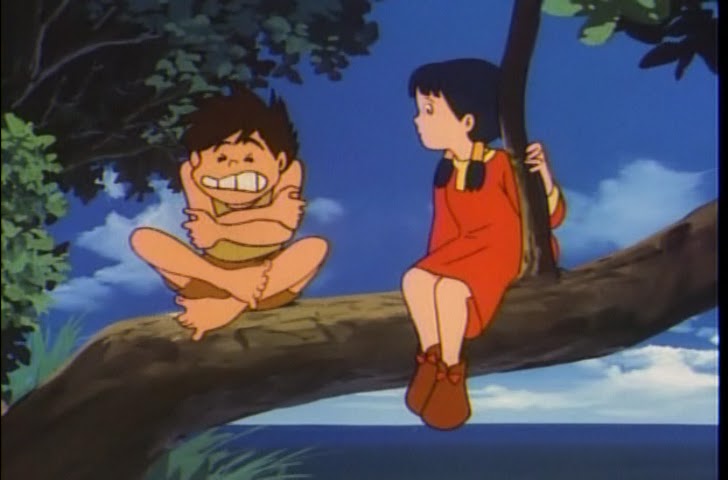 An earlier chapter goes through some of Miyazaki’s pre-Ghibli work, particularly his TV series Future Boy Conan – though Napier wrongly says Miyazaki did all the Conan storyboards, when many were contributed by Takahata and other staff, including Gundam creator Yoshiyuki Tomino. Napier’s last chapter brings in Miyazaki’s first “Princess Mononoke” story, which is very different from the blockbuster anime.
An earlier chapter goes through some of Miyazaki’s pre-Ghibli work, particularly his TV series Future Boy Conan – though Napier wrongly says Miyazaki did all the Conan storyboards, when many were contributed by Takahata and other staff, including Gundam creator Yoshiyuki Tomino. Napier’s last chapter brings in Miyazaki’s first “Princess Mononoke” story, which is very different from the blockbuster anime.
However, Napier skips over numerous “minor” Miyazaki works like Journey of Shuna, On Your Mark and the director’s TV contributions to Sherlock Hound and Lupin. The latter is an especially odd omission, as they could have had a least a nod in the Cagliostro chapter. Of Miyazaki’s early collaborations with Takahata, Napier writes that after their landmark Heidi, their next partnership was on Anne of Green Gables, ignoring their stint on 3000 Miles in Search of Mother in 1976.
Napier also misses out Miyazaki’s short films for the Ghibli museum, including a mini-sequel to Totoro and his contributions to Ghibli films he didn’t direct, including Whisper, Arrietty and Poppy Hill. Of course there’s a case for being selective – Miyazaki’s eleven “director” films are plenty to take on. However, fans hoping to delve into his more arcane titles should look elsewhere.
The same goes for readers wanting a book-length provocation. There are plenty of fans who argue that Miyazaki has shark-jumped along the way. His post-Spirited Away films have been especially criticized, as Napier acknowledges. Mamoru Oshii suggested the rot set in with Cagliostro, while Helen McCarthy argues more broadly for a less fannish reassessment of his career. Moreover, the current fashion for worst-to-best online lists forces writers to explain why, say, Ponyo or Porco Rosso are their least favourite Miyazakis.
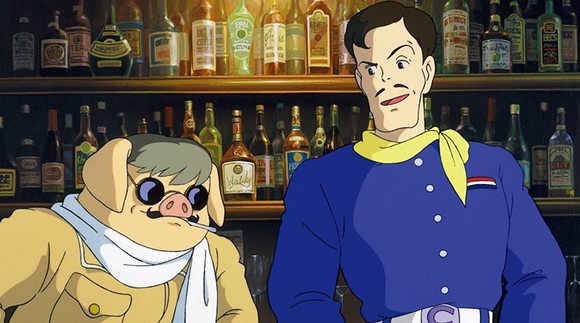 Napier refuses to take that line, finding much to praise and intrigue her in each Miyazaki film, and nothing to truly disappoint. Of Howl, for example, she acknowledges the critical complaints about its story, but she prefers to see it “as a work more poetic than narrative, stringing together a tapestry of images to create a multifaceted whole.”
Napier refuses to take that line, finding much to praise and intrigue her in each Miyazaki film, and nothing to truly disappoint. Of Howl, for example, she acknowledges the critical complaints about its story, but she prefers to see it “as a work more poetic than narrative, stringing together a tapestry of images to create a multifaceted whole.”
As the “Life in Art” subtitle suggests, Miyazakiworld mixes critique with biography, looking for reflections of Miyazaki’s life and thought in his films. The first chapters depict Miyazaki’s early life. For new fans, they’re a great introduction, while seasoned Miyazaki-watchers will still find bits they don’t know. Napier mines an impressive range of Japanese-language sources, fully footnoted for future researchers.
For example, we learn that Miyazaki’s childhood was shaped by a bombing raid (described here), but also by his experience of a huge private garden owned by his wealthy family in Utsunomiya. This was a massive luxury for a Japanese kid during wartime, where Miyazaki could feed carp in a pond and play all day. That detail, notably, comes from the account of Miyazaki’s older brother Arata. Hayao himself would sweepingly claim he “had no enjoyable memories from childhood”, which seems implausible.
Napier certainly queries Miyazaki as a reliable witness, especially when it comes to his claims that his work isn’t about processing personal traumas. In Napier’s view, “Sometimes it is when we are closest to something that we have the most trouble seeing it.” It may also reflect his generation. Miyazaki may be reluctant to speak of his personal traumas when he’s painfully aware how so many of his contemporaries suffered far worse in the war than he did.
 It’s certainly near-impossible to see a film like Totoro as being about anything other than Miyazaki’s early life and trials. The situation in the film matches his childhood; Miyazaki’s own mother was bedridden with tuberculosis for years, leaving little Hayao with a mountain of daily chores, even firing up the bath. Ghibli president Toshio Suzuki would later recall an argument, similar to the one mentioned earlier, where he asked Miyazaki if a “good” hardworking child as Totoro’s Satsuki could really exist. Miyazaki: “She did exist. That was me!”
It’s certainly near-impossible to see a film like Totoro as being about anything other than Miyazaki’s early life and trials. The situation in the film matches his childhood; Miyazaki’s own mother was bedridden with tuberculosis for years, leaving little Hayao with a mountain of daily chores, even firing up the bath. Ghibli president Toshio Suzuki would later recall an argument, similar to the one mentioned earlier, where he asked Miyazaki if a “good” hardworking child as Totoro’s Satsuki could really exist. Miyazaki: “She did exist. That was me!”
But interpreting a creator’s personality through his work is seldom so clear-cut. For instance, I wasn’t sold on one of Napier’s lengthier arguments, that the memorable “heavenly cloud” monologue in Porco Rosso, reworked from a story by Roald Dahl, is actually a coded version of all Miyazaki’s conflicts and angst. To me the scene is more Miyazaki’s hero-fantasy of what a cool middle-aged geezer should be like, though Napier provides some striking introspective quotes from interviews to back her case.
On the other hand, I love Napier’s suggestion that Miyazaki’s version of Lupin in Cagliostro – a playboy crook who turns into something better – is a response to the director’s own playboy father. In another bold stretch, Napier suggests that Miyazaki’s disapproval of his dad might have led him to de-emphasise adult sexuality in his works generally, to the point that some pundits argue that it’s not anime at all.
Staying with parents, there’s interesting stuff on Miyazaki’s mother Yoshika. We learn she and the young Hayao argued furiously over the Matsukawa incident, which pitted a left-wing railway union against the government. Miyazaki, unsurprisingly, backed the union; he was already leftist at that age. Older British readers may remember the arguments that raged over family tables over the 1980s miners’ strikes, which helped inspired Miyazaki’s Laputa.
Napier notes that Laputa’s pirate queen Ma Dola is often seen as a tribute to Miyazaki’s mum – Hayao’s younger brother Shiro thought so. However, Napier also notes that whereas Ma Dola is imposing and burly, practically ogre-ish, the real mother “in the only photograph I could find of her, seems petite and delicate.” Napier suggests that Miyazaki’s mother complex might have equally led to the frequent images of boys rescuing girls in his early anime – in Conan and Cagliostro, for instance, though Wind Rises also returns to the subject.
Of Napier’s analyses of Miyazaki’s films, I was most interested in her discussion of the universally accessible Kiki. Napier outlines how, while it might look like a worrying story of child labour – on your broom, girl, and find a job at thirteen! – it reflects the rising ability of young Japanese women in the 1980s to work outside the home, travel abroad and enjoy independence.
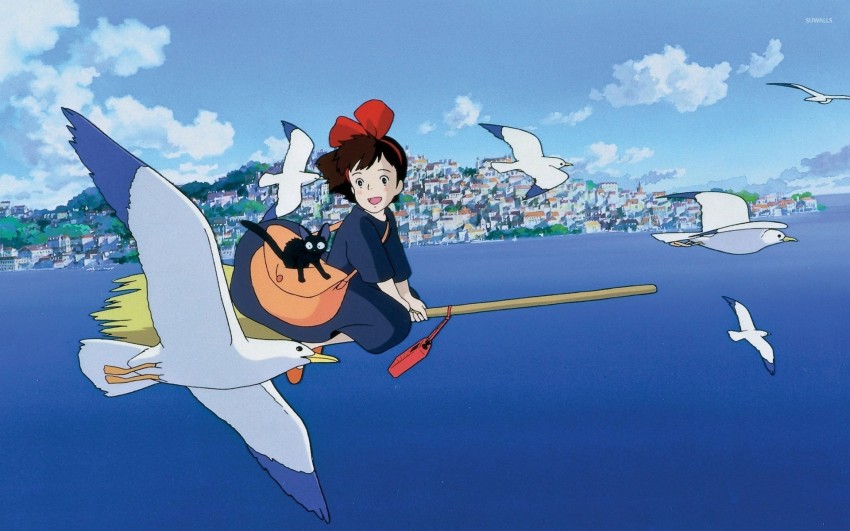 Napier highlights Kiki’s stress on female relationships and networks, and points out something that’s obscured in the official translations. Late in the film, Kiki and her older friend Ursula discuss their callings as witches and artists; in English translations, they talk of spirit or inspiration. But the Japanese word is blood, which has very particular overtones in a film about a pubescent girl coming of age.
Napier highlights Kiki’s stress on female relationships and networks, and points out something that’s obscured in the official translations. Late in the film, Kiki and her older friend Ursula discuss their callings as witches and artists; in English translations, they talk of spirit or inspiration. But the Japanese word is blood, which has very particular overtones in a film about a pubescent girl coming of age.
Moving to other films, for readers wondering about the “Spirited Away is a prostitution metaphor” theory – which some fans insist is a cast-iron fact – Napier dismisses it quickly, seeing the film as a more general critique of modern materialism. She does, though, find other metaphors in Spirited Away, claiming “Chihiro is a literal manifestation of anorexia”; no prizes for guessing which character manifests bulimia. I confess I’ve never seen Spirited Away that way, but its obsession with eating and purging is undeniable.
On Totoro, Napier claims the film is open-ended on whether the titular creatures actually exist. I’ve always found this suggestion curious – if the Totoro don’t exist, then what on earth is “really” happening in the later scenes? I also find it odd that, after debunking the fan myth that the girls actually die (!) in Totoro, Napier argues for a similar – and to my mind, no less preposterous – reading of Ponyo, suggesting the cute fish-girl is a mass murderer.
Otherwise Napier lays weight on Miyazaki’s portrayal of children as dynamic, responsible individuals” with “childhood as a utopian site, reminding us of what we could be if somehow that innocence were recaptured.” She presents this as Miyazaki’s personal conviction, though I think it’s one of the least original elements of Miyazaki’s world. After all, as Napier acknowledges, it’s a trope of the classic children’s literature that Miyazaki grew up with, from Treasure Island to Pippi Longstocking.
And if we’re talking about children, then it’s strange that Napier spends little time on Miyazaki’s own offspring, and especially his infamous relationship with his eldest son Goro. Everyone talks about Goro’s patricide-themed Earthsea; they talk less about its emotional sequel Poppy Hill, which Goro directed and Hayao wrote. It’s a film about a child losing her father, but then symbolically regaining him.
For more clues to Hayao’s and Goro’s relationship, there’s an obvious unopened source; a book by Miyazaki’s wife Akemi Ota on raising Goro and his brother, which is tantalizingly untranslated. Hayao and Goro are apparently both working on Ghibli films now, so this family drama may not be over yet. Napier’s Miyazakiworld is a useful and interesting overview of anime’s greatest creator, but it’s far from the last word.
Andrew Osmond is the author of the BFI guide to Spirited Away. Susan Napier’s Miyazakiworld is out now.
Leave a Reply